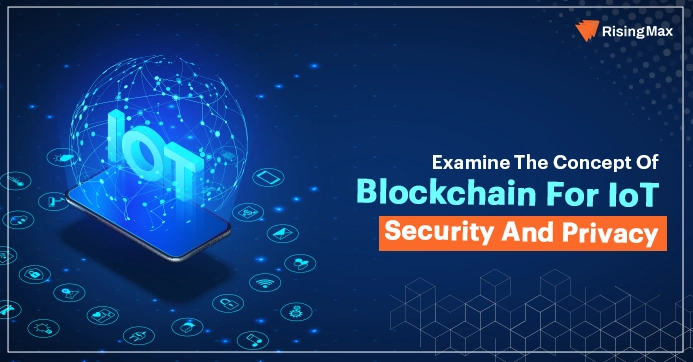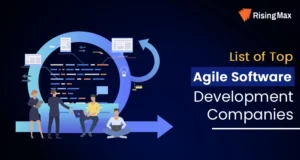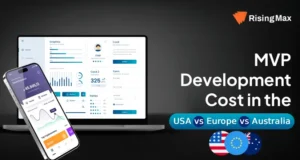IoT has received a tremendous amount of admiration over the years, both from big corporations and private individuals. Moreover, the widespread acceptance of this modern innovation raises numerous safety concerns.

Simply stated, every ‘thing’ linked to the ‘internet’ poses a security risk to the entire network. Internet of Things World, a San Francisco-based IoT conference, overviewed over 100 IoT corporation leaders and discovered that access control and execution are the top two broad categories of hurdles for tech innovation.
On the other hand, Blockchain is computationally costly and entails increased transmission expenses and delays, making them unsuitable for IoT devices.
This stance proposes a new stable, highly confidential, and portable IoT architecture based on Blockchain technology, which excludes the operational costs of Blockchain while retaining the majority of its security and privacy perks. Blockchain technology is essential to revolutionizing IoT device security and reliability. It can strengthen security features and integrity.
Let us examine the correlation between the two and how Blockchain will resolve IoT’s key limitations.
Existing Threats For IoT Security
As stated in the 2020 Unit 42 IoT Threat Report, 98% of IoT device traffic is inherently insecure, which means that the overwhelming majority of private and confidential information on the network is remarkably susceptible to hackers.
Furthermore, 57% of IoT devices are likely exposed to moderate attacks, making them readily exploitable by cybercriminals. Despite the cost of IoT and its rapid expansion, it’s critical to reconsider how we embrace internal network management in protecting IoT devices and networks.
Several challenges faced by this massive deployment:
Network safety. Because of the advancements proposed by 5G technology and the accessibility they provide, these communication systems can be an extremely appealing target for cyber attackers.
Data from multiple sources must communicate directly and incorporate similarly while maintaining privacy, information protection, and information security.
Possibly unprotected IoT devices because a vulnerable device could be employed to strike other network components.
To summarize, the main issue is ensuring the security and privacy of data conveyed from one network to another. In this regard, the combination of blockchain technology and IoT can help.

Accessibility Takes Precedence Over Security.
Integrated devices are primarily intended for user convenience: they enable simple internet connectivity, which is usually automatic or requires the entry of user credentials.
This allows individuals to use their devices from anywhere around the world effortlessly. Simultaneously, this opens up countless opportunities for cyber attackers to gain access to web devices and steal private data such as bank data or vulnerable health records. Contrary to popular belief, most people are conscious of IoT device security flaws but are prepared to give up security for comfort.
Profit is more important than security
Cybercriminals see frequent users’ confidentiality as low-hanging fruit. Most customers tend to be unconcerned until their data is compromised and misinterpreted. Time to market is an essential corporate criterion in today’s highly competitive marketplace.
Alas, securing device safety and reliability takes a back seat. According to the Global Print Security Landscape report, 60% of enterprises in the United Kingdom, France, and Germany were breached through printers in 2019, resulting in more than $400,000 in losses.
Centralized IoT network
IoT employs a client/server or centralized connectivity framework. A solitary gateway transmits information between IoT devices and communicates to a cloud platform. This framework has been used for decades, but it is no longer appropriate for the growing IoT networks and the scale of information they exchange. The centralized approach has several flaws:
High costs for centrally controlled cloud upkeep and connectivity devices. With the emergence of the internet of things, expenditures will also increase.
There needs better interoperability due to limited information transfer with other centralized infrastructures.
A single gateway is untrustworthy because it enables access to a complete IoT network by jeopardizing a specific device.
Begin using Blockchain today! Get our FREE Blockchain consultation to use this technology to improve your business.Call For A Blockchain IoT Security
Because blockchain technology is its dominant technique, it became well-known with the advent of cryptocurrency mining. But it currently has to do much related to the Internet of Things.
The amount of information extracted by IoT devices is immense, all delivered in a chain and vulnerable to malicious cyber attacks. In this frame of reference, the opportunity to use the Blockchain infrastructure to authorize, standardize, and prevent the acceptance of data handled by devices emerges.
For IoT security, the blockchain can supervise the data gathered by sensors without enabling it to be recreated by any incorrect data. Sensors can also use Blockchain technology to transmit files without the assistance of a trusted intermediary.
The below-mentioned characteristics make blockchain an efficient tool in the fight against IoT cyber threats.
Decentralization
Information is kept on multiple networks across the globe in a blockchain ledger, eliminating performance degradation. Before data is added to the network, all nodes must approve and verify it.
As a result, no transition is permitted unless all network respondents agree. This method, known as peer-to-peer information exchange, is intended to prevent malicious parties from blockchain transactions.
Because there is no central server, there is no risk of an attacker-in-the-middle attack, in which hackers intercept data transmitted between a cloud service and a machine.
Public accessibility
Because blockchain is mainstream, it is available to every network member. The shared identity of stored blocks and exchanges is visible to all network members, but viewing the content requires a private key.
This provides clear accountability to all processes while also keeping data secure. It is impossible to modify details once they have been stored on a blockchain.
Data security
Blockchain secures data with innovative cryptographic protocols, making it more private. This is accomplished to ensure that financial transactions are risk-free. IoT devices can use the blockchain model to communicate with one another exactly as financial transactions do to empower highly secure interaction between interconnected devices.

Perks Of Integrating Blockchain And IoT
Some of the advantages of combining Blockchain and IoT are as follows:
Information authenticity for quality standards: Because of its data integrity, blockchain technology can add a robust system to processes to identify data distortions rapidly and precisely.
Device monitoring to detect faults: Because IoT networks can be massive, failure structures can be hard to spot. Each IoT element is given a specific key by blockchain technology, which aids in the detection of inconsistencies.
Fast Automation: IoT technology empowers digitization, but computer-controlled responses can be authorized through this network when combined with smart contracts.
Improved Security: Since blockchain technology is decentralized, fraudsters won’t be able to breach a dedicated server and corrupt its information, irrespective of the interconnection methods used.
Employee performance: Going any further than sensor nodes, blockchain technology can monitor user interactions to show you who, when, and exactly how an instrument was used.
Implementing Blockchain For IoT Security And Privacy
Coordination of devices
In terms of IoT, Blockchain technology exists due to its credibility in addressing scalability, reliability, and privacy concerns. It includes facilitating mobile coordination and monitoring and handling transactions for millions of interconnected devices.
This is a decentralized methodology in which encryption techniques are used to ensure consumer information privacy. It is a method that eliminates flaws and provides a resilient ecosystem.
A tendency toward safety
Organizations choose Identification Solutions and services to handle authentication mechanisms because they offer improved accessibility, convenience, and reliability.
Blockchain Authentication is among those developments since it can store data in sequences of operations that, when authenticated, prevent its change. The structure’s equitable data storage avoids network leaks.
Additionally, it’s crucial to note authentication methods, which need validation and security of corporate and employee data, both of which were unanimously agreed to be rights under the General Data Protection Regulations.
Processing Transactions
When we talk about exchanges, we’re talking about what process parameters do. These identified and linked transactions are recorded by blockchain in a way that makes them secure, auditable, accessible, effective, and intervention.
Each component logs the actions with a log entry and confirms that they happened in the right order without being tampered with. Anyone wishing to add a transaction to the network must have it accepted by everyone else using a protocol.
Data Monitoring
The IoT devices employed in transactions eventually become secure on the premise of all devices connected with ledgers included in Blockchain. Every link in the process can trust the data by storing it and encrypting it, ensuring that the interaction is seamless and that the user’s details are kept private and untouchable.
Reliability and trust problems can be resolved with the help of the blockchain. No one will be able to modify the codes, and the credentials will remain secret, providing the Internet of Things’ activities with the desired level of security.

Use Cases For Blockchain In IoT Security
Blockchain in IoT security has a plethora of opportunities to work together to build a community for network devices and allow businesses to profit from the data gathered. There are a few instances of businesses that have already implemented it. Examples include:
Automotive sector
The automotive sector is creating automation equipped with IoT sensors, enabling the quick and simple interchange of essential data. Integrated gasoline payments, automated driving, intelligent parking, and traffic management are all possible with blockchain.
Financial sector
To build a flexible and decentralized framework for IoT devices, networks, and apps, banks, including ING, Deutsche Bank, and HSB, embrace blockchain technology.
Agriculture
The system can transform this field, from manufacturing to the supermarket, making it one of the most important for beneficial for humans. IoT sensors can be deployed on farms to enhance the distribution network and transmit their data straight to a blockchain network.
Smart homes
The importance of IoT in enabling these smart houses is evident. The combination of blockchain for IoT security enables you to encrypt sensitive and important documents, control your network security remotely, and do away with centralized infrastructure.
Pharmaceutical industry
The problem of drug replication is getting worse every day. Blockchain technology’s transparency and reliability enable full supply chain management of the transportation of pharmaceuticals from their origination point to their ultimate destination.
Logistics and supply chain
Many parties are involved in a logistics network, which makes end-to-end monitoring difficult. It may also include numerous payments and invoicing. As a result, many businesses are attempting to make it possible for IoT devices to track the shipment process on cars. The fusion of both solutions increases the network’s accountability and efficiency because there needs to be more clarity.
Now that you are clear with the concept of using blockchain for IoT security and privacy let us understand the development process of blockchain IoT.
Blockchain IoT Development Steps
Assessing Problems
The initial step in Blockchain IoT development is problem identification and data collecting. We then put together a strong plan that includes all the necessary components that aid in the appropriate solution.
Plan for a Resolution
After identifying all the problems, we create a remedy that addresses them. To drive the ideal solution, we utilize all crucial derivatives to transform company concepts into reality and create a more interconnected environment.
Solution to Application
The solution is now ready, and the next step is to make it into an application that meets all the requirements. We build the platform with all essential attributes and capabilities.
Performance of Application
A predetermined sequence of steps is followed during the execution of the program. We make sure that our cutting-edge solution helps to solve the identified issue. The developed app solution also moves closer to the development and deployment stage.
Application Testing
This step thoroughly tests the Blockchain IoT app to find any faults or potential bugs. Before introducing our solutions to the marketplace, we ensure they run without a hitch.
Support & Improvement
If more updates and fixes are needed, an usually connected and maintenance service will be available. Our assistance and upgrade services guarantee that the asset or application works properly.

Choosing RisingMax Inc. For IoT Blockchain Development
We are a reputable Blockchain IoT Application development company in NYC, backed by a technologically oriented group, knowledgeable about the most recent technologies, and skilled in many international industries. We provide projects on schedule and at competitive prices.
Superior Expertise
We focus on providing you with the finest possible system with our extensive experience in tech stacks such as Blockchain and IoT.
Innovative Solutions
Our team at this location uses state-of-the-art technology and creates highly personalized solutions that address every organization’s needs.
Proactive Developers
We have a group of extremely committed blockchain developers with years of expertise providing Blockchain development services.
Strong R&D Team
RisingMax’s R&D team will locate the newest technology and implement complex algorithms for the most viable approach.
Reliability, privacy, and assurance in IoT security are issues that blockchain technology is the ideal alliance to address. Regarding IoT, RisingMax Inc. is a consulting company specializing in innovation, emphasizing security measures and credentials. Contact our consultants to learn more about Blockchain for IoT security and privacy!










